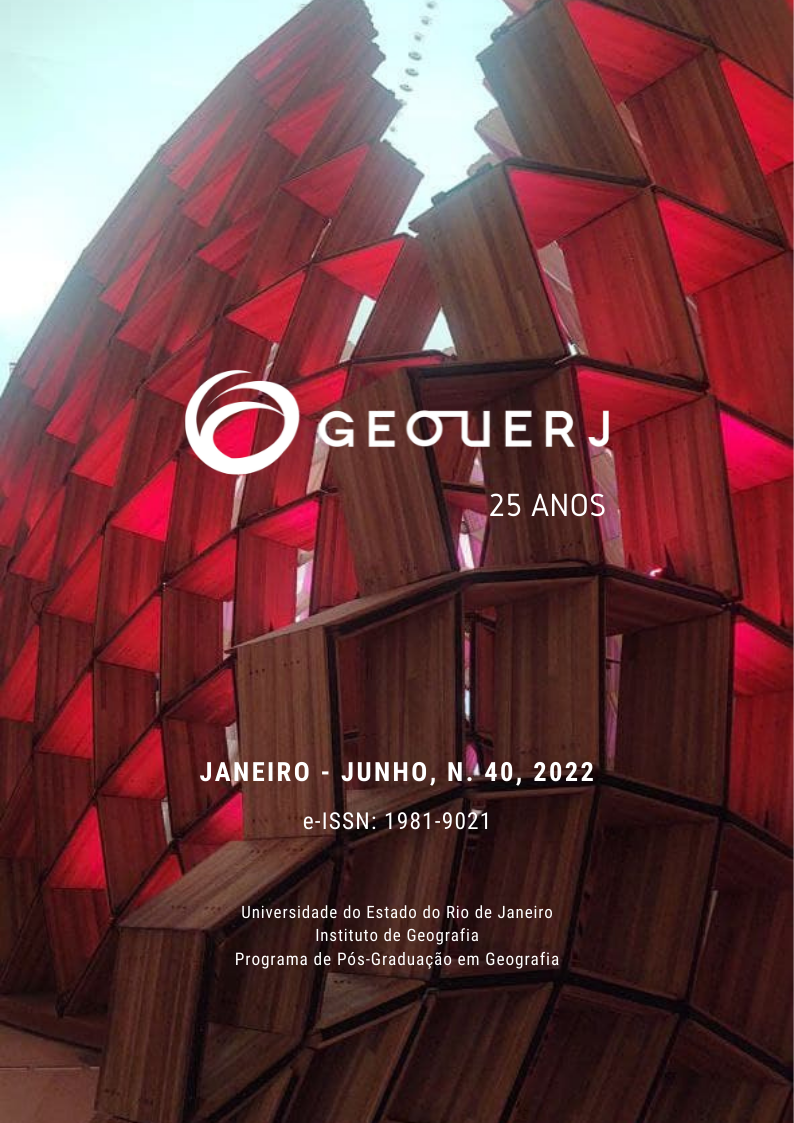ANALYSIS OF PORTICOS AS IDENTITY SYMBOLS AND LANDMARKS GEARED TO THE TOURIST MARKET BASED ON EXAMPLES IN PETROPOLIS AND ARMAÇÃO DOS BÚZIOS
DOI:
https://doi.org/10.12957/geouerj.2022.51496Keywords:
Porticos. Monuments. Symbols. Landmarks. Tourism.Abstract
Introduction: The spatialization of the tourist activity often presupposes the construction of a representative image of that locality as a destination. In several cases, the consolidation of this synthesis goes through the monumentalization of outstanding structures in the landscape. These elements are designed to stand as a local identity symbol. The construction of this study goes through the characterization of the porticos as identity symbols that are forged for specific groups, but with the ability to evoke a general identification of that community; their place in the landscape as an integral part of an effective locational policy, a component of a selective spatial organization; in addition to their monumentality as part of the territorialization of certain actors, making the space suitable for the exploitation of tourism and/or vacations. Objectives: By conceiving the tourist porticos as structured elements for the construction and/or consolidation of an image, we seek to understand how the work of characterizing them as a landmark of a certain tourist area materializes, exemplifying the phenomenon with a study focused on the municipalities of Petrópolis and Armação dos Búzios in the state of Rio de Janeiro. Methods: We developed a qualitative study based on theoretical and documentary analysis guided by the objective of proposing a literature review aligned with the evaluation of the materialization of the process in the selected municipalities. Results: By observing that the porticos in both Petrópolis and Armação dos Búzios are used by the tourist trade and the public power as symbols or even syntheses of the municipal profile, we can see that there is a relationship between the territorialization of the porticos associated with a locational policy and a symbolic aestheticization of the landscape, which is in alignment with the initial question that motivated the study. Conclusion: As final remarks, we consider it important to highlight that porticos should not be analyzed in isolation, but as part of an organizational strategy of the space that aims to satisfy the interests of politically and economically hegemonic groups, which has been especially visible in the case of public policies based on the so-called Urban Entrepreneurship, for which the development of tourism is one its main arguments.Downloads
Download data is not yet available.
Downloads
Published
2022-07-19
How to Cite
BORGES, Rodrigo dos Santos; RIBEIRO, Miguel Ângelo Campos. ANALYSIS OF PORTICOS AS IDENTITY SYMBOLS AND LANDMARKS GEARED TO THE TOURIST MARKET BASED ON EXAMPLES IN PETROPOLIS AND ARMAÇÃO DOS BÚZIOS. Geo UERJ, Rio de Janeiro, n. 40, p. e51496, 2022. DOI: 10.12957/geouerj.2022.51496. Disponível em: https://www.e-publicacoes.uerj.br/geouerj/article/view/51496. Acesso em: 27 jul. 2025.
Issue
Section
Articles
License
The copyright of articles published in Geo UERJ belongs to their respective authors with rights to first publication conceded to the journal. Every time that the article is cited and reproduced in institutional repositories or personal and professional web pages the link to the journal web page must be provided Geo UERJ.

The articles are simultaneously licensed under theCreative Commons Atribuição-Não Comercial-Compartilha Igual 4.0 Internacional.


